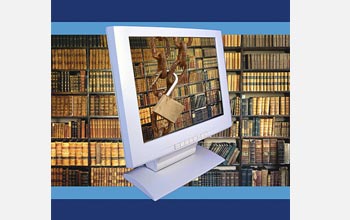Hey, Warner, Leave those Kids Alone
Commentary by Corynne McSherry
Last month we reported that Warner Music Group was using YouTube’s Content I.D. (aka Video I.D.) tool to effectively censor myriad fair uses. We asked people to contact us if they needed legal help and put up a YouTube removal primer to give folks information about their options. As a result we’ve seen beautiful film montages set to music, videos to assist the hearing impaired, and many other examples of amazing artistic talent that have been censored by Warner Music.
But it turns out the problem is even worse than we thought. One way to check Warner’s abuse is for fair users to challenge improper Content I.D. takedowns. But very few are willing to do so, because they are afraid of the consequences.
Why are people scared? Because our broken copyright system leaves them facing the prospect of paying outrageous statutory damages and even possibly Warner's attorneys' fees if they stand up, fight back and, despite overwhelming odds in their favor, lose. It’s a gamble with their life savings that most people just aren’t willing to take, even when their works are clear fair uses and even if EFF gives them free legal help.
Of course, it’s hardly in the interest of a copyright owner to sue a creator who has engaged in an obvious fair use. In fact, we’re not aware of any content owner ever suing an individual YouTube user over a remix video. And since Warner is taking the videos down sight unseen, there’s no indication Warner actually objects to any particular video. So these creative, beautiful works are simply collateral damage in Warner’s negotiation with YouTube over revenue sharing. Thus, the Content I.D. tool, in the hands of a careless copyright owner, has helped create the worst of all worlds: incredibly easy takedowns on one side, and an intimidating put-back procedure that seems to invite legal risk on the other.
While YouTube is partially at fault for giving Warner this censorship-friendly Content ID tool, it’s time for Warner to take some responsibility and stop the censorship.
The best thing for Warner to do is to go back to how it treated videos before. The Content ID system should be set to flag possible infringing works and then Warner should have a human review those works before they are taken down. This is, after all, what Viacom (not exactly a softie on copyright issues) does.
At a minimum, Warner should reassure legitimate fair users who want to notify them when the ID tool is overblocking. Specifically, Warner should promise that no one will be sued for simply filing a "dispute" on a Content I.D. takedown. Even after a "dispute" is filed, Warner has the option of using a DMCA takedown notice to target videos that it really objects to, so Warner should give YouTubers comfort by saying they won't escalate straight to lawsuit after a "dispute" filing, without first availing themselves of their DMCA takedown option.
In the meantime, though, we still want to hear from folks who have been targeted by Warner, because if Warner doesn’t stop on its own we still want to intervene in this fight. Before you contact us, take a look at our YouTube removal primer, but if you made a fair use video and you want to fight back, we want to hear from you.
Hey, Warner, Leave those Kids Alone | Electronic Frontier Foundation


